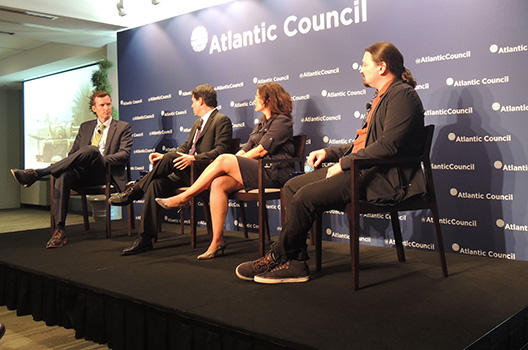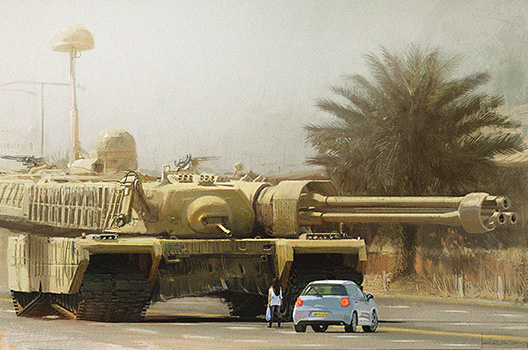In the not-too-distant future, most of humanity will live in megacities. Megacities will serve as economic, cultural, and political hubs of international affairs—but they also will form the complex landscape of rivalry and violent conflict. Recent instances of urban combat–Saigon, Sarajevo, Fallujah—only begin to inform the epic challenge of fighting in our mid-century megacities. To inform our understanding of that challenge, the Art of Future Warfare project hosted a discussion entitled Envisioning the Future of Urban Warfare at the Atlantic Council on June 23, 2015. The event was the capstone of the project’s “War-Art Challenge,” which elicited illustrations (as from a graphic novel) that renders scenes from urban fights in the 2040s and 2050s.
The panel included:
- Max Brooks, the New York Times-bestselling author of World War Z;
- Alex Brady, the War-Art Challenge winner;
- Jon Chang, author of the Black Powder\Red Earth graphic novel series;
- Erin Simpson, President and CEO of Caerus Associates; and
- August Cole, Director of the Art of Future Warfare Project at the Atlantic Council, who moderated the discussion.

The general themes of the conversation were as follows:
Dealing with future megacities requires whole-of-society approaches. While the military will lead the physical and cyber fight against the adversary in a megacity, the United States, along with its allies and partners, should endeavor to engage with multiple members of the city’s society. Indeed, as Brooks recalled, the United States should engage with the foreign governments, NGOs, important individuals, volunteers, aid groups, and others. This not only helps to stem the externalities brought of war, but also shows that the United States cares about the people in the city. In essence, future urban fights will require a stronger emphasis on DIME: diplomacy, information, military, and economics.
The United States has a distinct advantage. Jon Chang pointed out that the United States already has tons of megacities, in which the United States could start doing exercises to learn what they might face in the future. In fact, the United States has an advantage here; no other country has the combination of such a powerful military and large cities. The only caveat is that other countries have a much longer history of urban operations in their own cities, especially Brazil. It would behoove the United States to learn from those countries and perhaps partner with them in future missions.
It’s hard to deal with issues you do not know exist. Erin Simpson pointed out that books like Brooks’ World War Z describe what happens after the general population knew what the problem was. However, in books as in real life, the characters would not know what the problem is until it arises (“the unknown unknowns,” as Donald Rumsfeld famously described it). It is already hard for present-day intelligence capabilities to give us foresight on what specific issues are over the horizon, and this may get harder in future megacities. Simpson said that sensors will play a more important role for US militaries as they try to navigate harsh battlespace.
New technologies can help, but they won’t solve every problem. Brooks said that the United States suffers from “technophilia”—that is, it believes that many of the solutions to our future issues, like megacity warfare, can be partially solved by new and improved technologies. This is partially true, continued Brooks, but “greater understanding” of the area’s history, its people, and day-to-day life will prove more important in the long-run in the context of a city conflict. However, the panelists listed certain technological developments that can help future militaries in cities. Chang said that the Internet will continue to drive change, especially the maturation of cryptocurrencies. Simpson believes that software, not hardware, will play a crucial role. Cole, adding his thoughts, believes that batteries that keep tools running longer—like those providing a twelve-day charge—will allow troops to use new capabilities for longer periods and with more reliability.
